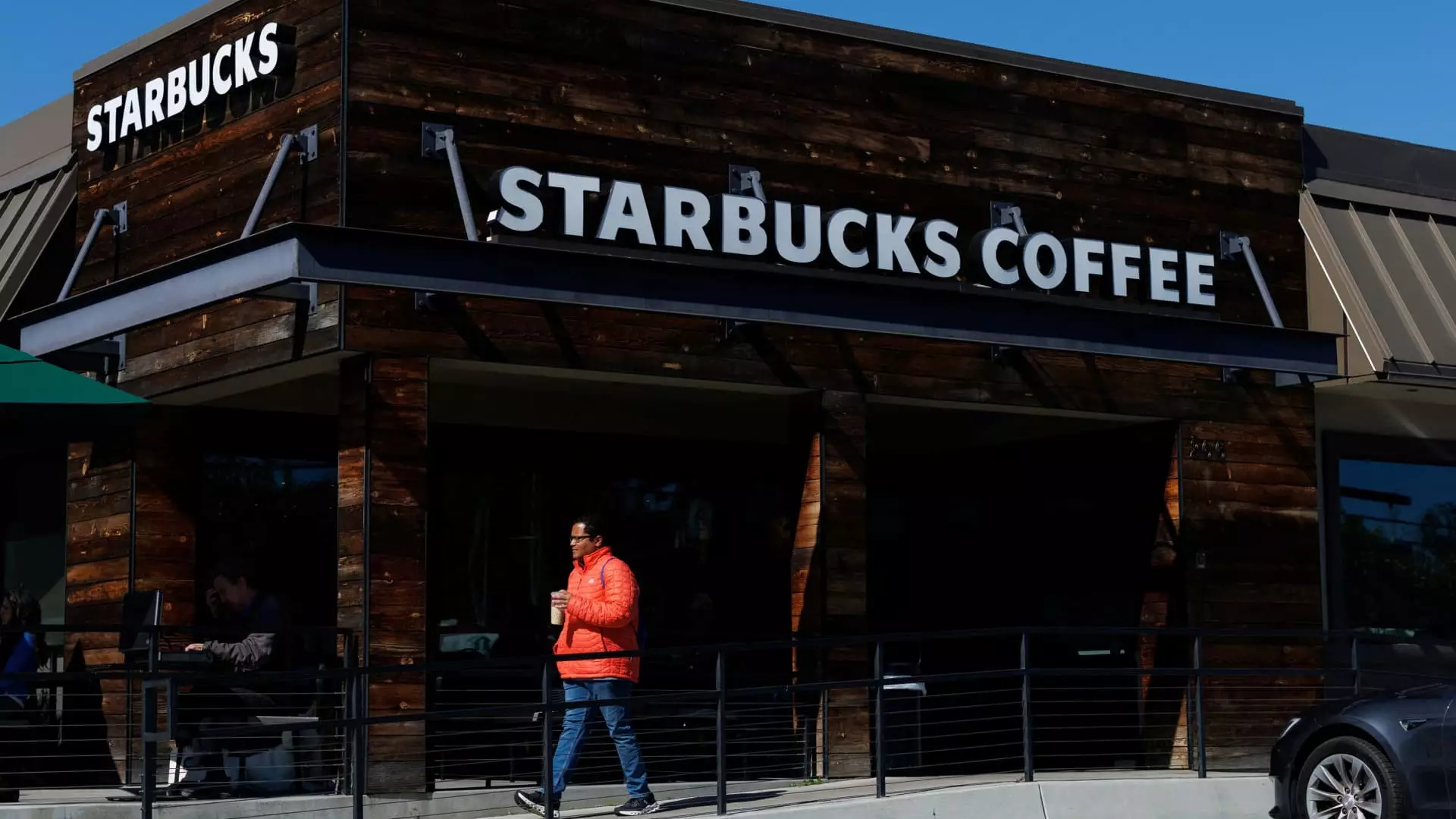In a stark reflection of investor fears, the restaurant stocks experienced a considerable downturn early Monday, setting off alarm bells across the market. With lingering uncertainty surrounding the economy and the specter of recession looming, the collective worry reached a boiling point. The catalyst for this turmoil was President Donald Trump’s unexpected announcement regarding steep tariffs on imports from key trading nations. This decision triggered a chain reaction that sent U.S. stock markets spiraling downwards for three consecutive days. Retailers, particularly in the restaurant sector, found themselves trapped in a climate of paranoia and uncertainty, as analysts raced to reassess companies and strategies amidst these economic tremors.
While few analysts believe the tariffs will hit certain restaurant chains squarely on the chin—companies like Starbucks or Dine Brands—there’s an undercurrent of anxiety about broader economic implications. UBS analyst Dennis Geiger underscores this sentiment, positing that while the immediate effect on commodity costs is manageable, the true threat lies in the potential erosion of consumer spending and demand. The restaurant industry, which thrives on discretionary spending, feels particularly vulnerable as indications of an economic downturn surface.
Starbucks: The Canaries in the Coal Mine
Among the many brands suffering the fallout, Starbucks stands out as a prominent example of the vulnerabilities facing the industry. The coffee giant saw its shares decline by over 3% following a downgrade from Baird, which cited imminent economic challenges. This marks a sharp decline for Starbucks, down nearly 20% since the tariffs were leveled. Such steep losses prompt an unsettling question: how resilient will consumer habits be in the face of escalating prices and economic uncertainty?
Analyst Sara Senatore from Bank of America Securities points to several factors influencing this poor performance, including elevated coffee costs driven by tariffs, a possible rise in anti-American sentiment abroad, and increasing recession fears. The ugly reality is that much of the world’s coffee supply originates from politically fragile regions, and the intertwined consequences of tariffs and trade politics could severely impact Starbucks’ growth strategies, particularly in burgeoning markets like China.
The Broader Implications for Dining Chains
The repercussions of these economic pressures extend well beyond the confines of coffeehouses. Casual dining chains and fast-casual eateries face their own crises, grappling with share price declines in lockstep with investor anxiety. Dine Brands, parent company of Applebee’s and IHOP, suffered close to a 3% dip, alongside Darden Restaurants and Texas Roadhouse, each suffering similar fates. Even fast-casual darlings like Chipotle and Sweetgreen couldn’t escape the downward trend, further solidifying the notion that all dining segments are in jeopardy.
Fast-food restaurants, traditionally seen as safe havens during recessions, may not hold the strong market position they once did. While consumers have historically gravitated toward cheaper dining options when times get tough, recent consumer spending trends paint a different picture. Low-income patrons appear to be reducing their visits significantly, leaving high-end diners to weather the storm relatively unscathed. A scenario where McDonald’s and Taco Bell record dwindling sales due to a retraction in discretionary spending would mark a significant turnaround in the dining landscape.
The Slim Pickings of Success
In an unexpected twist, a handful of restaurant stocks managed to defy the overall market decline. Dutch Bros. exhibited notable resilience, with shares rising over 3%. Meanwhile, Cava and Domino’s Pizza also showed slight gains, whereas broader market contractions painted a grim picture for most others. However, these glimmers of success seem more like anomalies than trends—indicative of a market navigating treacherous waters rather than clear signals of a turnaround.
The restaurant sector is ensnared in a gripping conundrum of external pressures and internal vulnerabilities. While the outlook remains bleak, it becomes increasingly essential for stakeholders to reassess not only their financial strategies but also their long-term resilience amid a shifting economic landscape. The looming recession serves as a harsh reminder: in the restaurant world, adaptability may be the only hope for survival.

